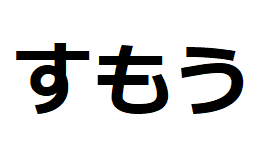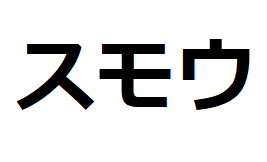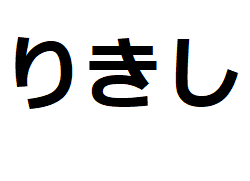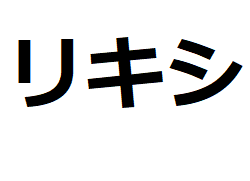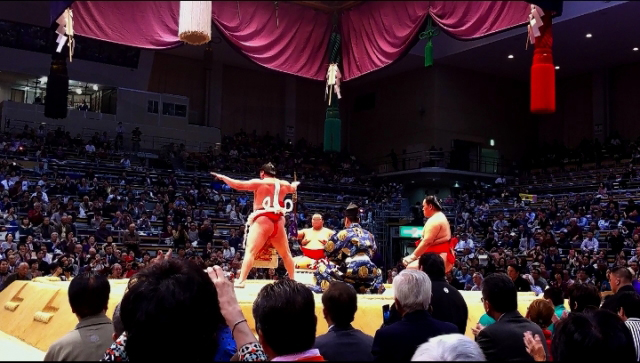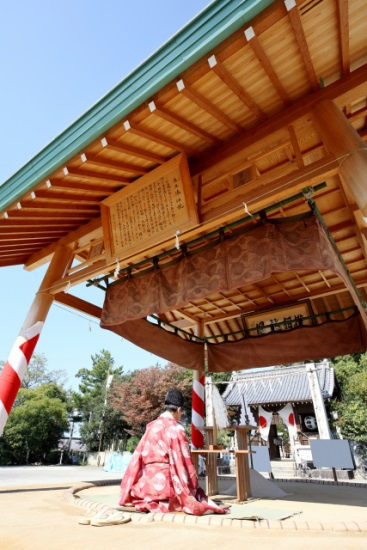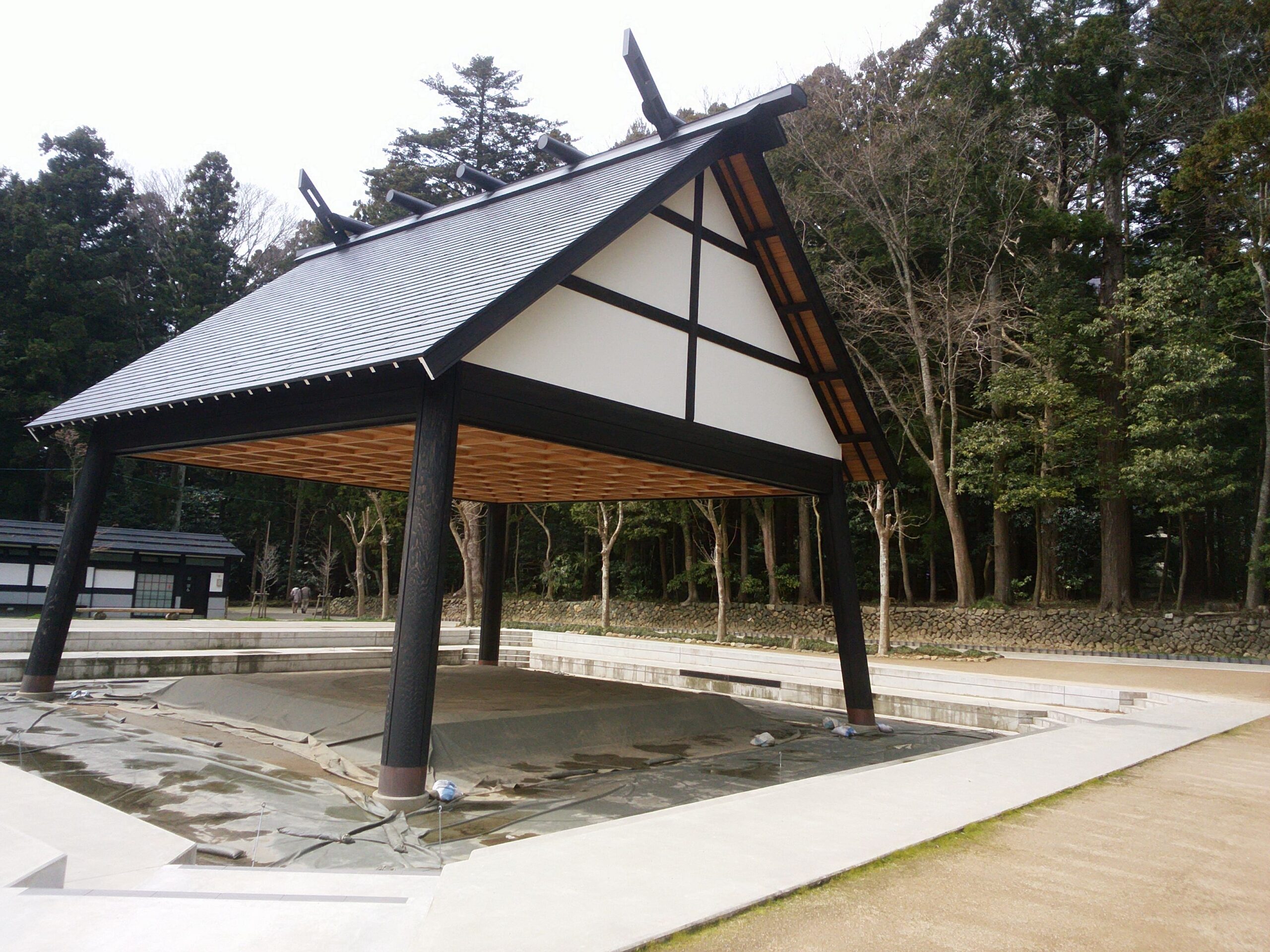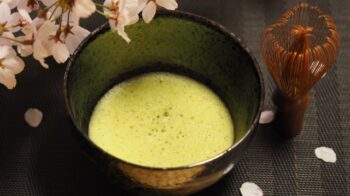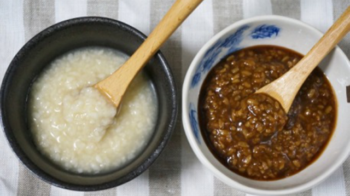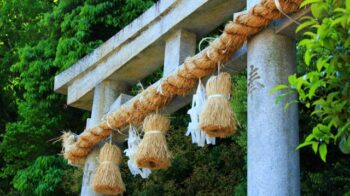Sumo and Shinto
Welcome to the world of Sumo and Shinto.
Strong wrestlers consecrated their strength to the Shinto gods at shrines.
This is the beginning of Sumo.
Therefore, there’s a close relationship between Sumo and Shinto.
Let’s look into the world surrounding them.
Below is the contents of this page.
1. Sumo
Briefly defining, Sumo is a match between two enormous wrestlers.
Characteristically, the match takes place inside a circle separated by Shimenawa called “Dohyo“.
If each of the wrestlers puts a foot outside the Dohyo or touches the ground with any part of the body except the sole, he loses the match.
Incidentally, we call each match Torikumi.
Sumo wrestlers
As you might already know, Sumo wrestlers have a peculiar appearance.
Firstly, their physique.
They are all fat. Although very fat, they move very adroitly. This surprising contrast always fascinates us.
Secondly, their costumes.
They wear only a special loincloth called “Mawashi” which is 9 meters long. It is made of satin and never washed (only hung out to dry). Without washing, they change Mawashi every year.
Thirdly, their hairstyle.
They all have long hair and make a topknot called Magé.
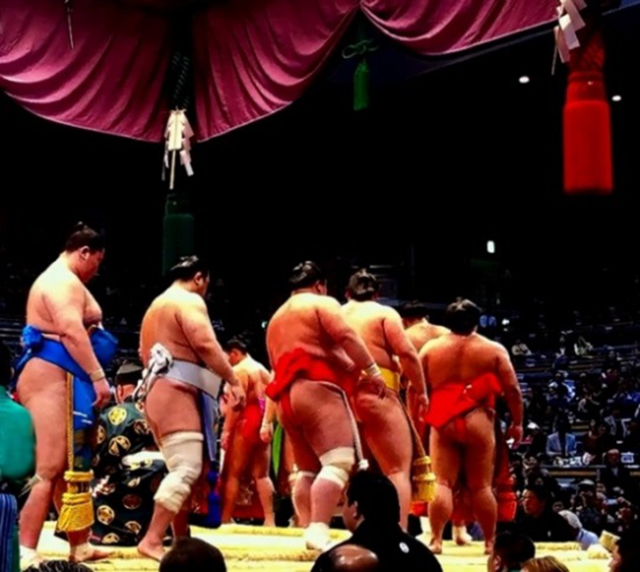
Rikishi
We call the wrestlers Rikishi which literally means powerful Samurai.
To tell the truth, during the civil war period (15-16th century), rikishi fought on the real battlefield as a kind of Samurai.
But after the establishment of Tokugawa Shogunate, rikishi left the battlefield and fought again inside the Dohyo.
Thus, Sumo restarted as a ritual and entertainment held inside Shinto shrines.
Although today, general matches are held in Sumo stadium, the significance itself has not changed so much.
Yokozuna
Next, please look at the wrestlers in the photo.
Can you notice that the wrestler standing in the centre wears a special apron?
He is the grand champion called Yokozuna and the apron he wears is decorated with a sacred rope, what we call tsuna.
Incidentally, zuna is another pronunciation for tsuna.
Because of the fact the champion wears this special apron, we call him Yokozuna.
By the way, Yokozuna gets in the ring last and executes a series of important rituals, just like shown in the photo.
2. Sumo and Shinto
Shinto
Although Shinto is widely accepted as the indigenous religion in Japan, it is a bit too ambiguous to be called a religion.
Little is known about its origin and Shinto remains mysterious even for Japanese.
They say that Shinto gradually emerged at the dawn of Japanese history and crystallized itself as a system of imperial religion maybe around the 5th century.
Therefore, it has neither a specific founder nor any sacred Scripture.
According to Shinto, gods live in everything in nature and bless us with good harvests.
In ancient times, wrestlers dedicated their strength to Shinto gods to pray for a bountiful harvest, especially harvest of rice.
Sometimes they conducted each match as a ritual to predict the will of the gods.
This is the beginning of Sumo.
Emperor
The origin of present Sumo was “Sechie Zumo” conducted in front of the Emperor as a ceremonial show.
Interestingly, this fact also indicates the close relationship between Sumo and Shinto.
Because the Japanese Emperor has been the Shinto priest of the highest rank.
As supporting this story, the Imperial family have always been well known Sumo lovers.
Even today we can find the emperor and the empress in Sumo stadium quite often.
As for stories about Rice and Shinto,
⇒visit here
3. Dohyo
Talking of Sumo and Shinto, we cannot forget the Dohyo.
Shimenawa
Originally, Dohyo was a circle surrounded by rice-straw sacks filled with earth.
But gradually, Shimenawa in the Shinto shrine came to be used instead of sacks.
By the way, we believe that Shimenawa separates the sacred domain from the terrestrial world.
Because of the sanctity of Sumo, they must have begun to use Shimenawa.
Roof
In old times, they built Dohyo outdoors (as you can see in the photo). That is why they placed the roof to ensure fair matches even in rainy conditions.
However, we can find roofs even in the stadiums with sturdy concrete roofs.
After all, Dohyo roof (which we call grand roof) is a vestige of tradition which makes Sumo the Sumo.
Inside
Finally, let’s see what’s inside.
To tell the truth, inside of the Dohyo, we can find 6 sacred things:
kaya nuts, washed rice, chestnuts, kelp (Kombu), dried cuttlefish and salt.
According to Shinto, these things protect the place from evil spirits and convert them to good luck.
4. Kanji and Kana
1) Kanji
To learn Kanji (Chinese characters) is always interesting and beneficial to understand what the word means.
Through Kanji, we can virtually grasp not only the meaning of the word, but also the background it was born in.
Kanji for Sumo is 相撲.
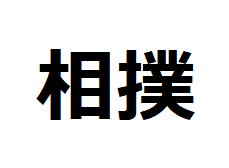
Firstly, 相.
相 means meet each other. Probably, in order to describe the situation that wrestlers combat face to face, this Kanji came to be used in Sumo.
Secondly, 撲.
撲 means beat or hit. Probably, in order to describe the situation wrestlers combat vigorously, this Kanji came to be used in Sumo.
To tell the truth, the regular rules of Kanji reading lead us to read 相撲 as souboku.
Just like the case of red bean (小豆 as Azuki), the word Sumo long existed and later the appropriate Kanji was allotted to describe the objects. Therefore, there are other Kanji for Sumo, such as 角力, although they are not so common as 相撲.
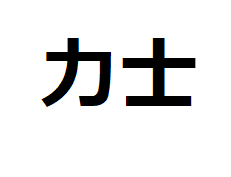
Next, 力士 (rikishi) which means Sumo wrestlers.
Firstly, 力(riki).
力 means power or strength. It was a hieroglyph to describe an agricultural tool for tilling the land. Since it requires strong power, 力 came to indicate the power itself.
Secondly, 士 (shi).
According to the most supported theory, it was a hieroglyph to describe an axe downward. Since axes were mainly used by warriors, 士 came to indicate warriors.
Therefore, 武士 which means warriors (as well as Samurai) also uses 士. Furthermore, for the names of professions basically fulfilled independently, such as lawyers (弁護士) and accountants (会計士), 士 is widely used.
2) Kana
There are two phonograms (kana) in Japanese: 1) Hiragana and 2) Katakana.
According to the most supported theory, both of them were formed by adopting one element of a Kanji character with similar sounding.
Originally, Hiragana were only for women. But today, it has by far the wider usage.
Talking of 2) Katakana, we use it mainly for foreign origin words.
Incidentally, there are 46 characters in both Hiragana and Katakana systems.
As for Sumo, Hiragana is すもうand Katakana is スモウ.
As for Rikishi, Hiragana is りきしand Katakana is リキシ.
